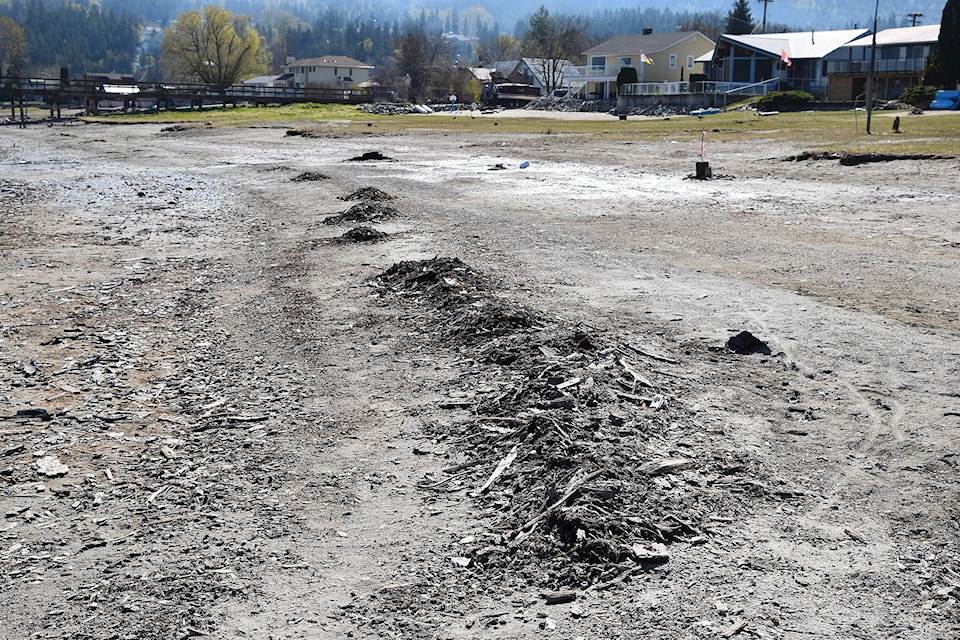Bark, sludge and smoke are concerns a few Canoe residents have raised in connection with the Canoe Forest Products plywood plant.
Ole Cumming lives on 75th Avenue NE in Canoe, on the Shuswap Lake waterfront in the vicinity of the wharf at the intersection with 50th Street NE.
He walked along the shore of the lake on a sunny day in late April, pointing to bark and sludgy-looking mud in and above the shallow water in front of his and his neighbours’ houses. He said while the beach was sandy years ago, a person will sink up to their knees in soft mud now.
Cumming said he and his neighbours rake up piles of bark and debris every day and remove it with wheelbarrows. He would like to see the plywood plant on dry land where logs would not be going into the lake.
As for smoke, while he said the clear white smoke is just steam coming from the kilns drying the wood, the blue smoke is not and it’s in the valley every morning.
Marcello Angelozzi, general manager of Canoe Forest Products, said if a complaint about air quality is raised, which is rare, staff check to make sure equipment is operating properly. He said the plant has stopped drying a couple of species of wood because they were harder to dry. Also, the plant must check its stacks twice a year according to provincial regulations.
Read more: Higher lumber prices good for two of Salmon Arm’s larger employers
Read more: Fire at Canoe Forest Products plywood plant quickly extinguished
Read more: Salmon Arm gives tax break to Canoe Forest Products plywood plant
Angelozzi spoke enthusiastically about a $1.5 million project underway for the plant. An RTO or regenerative thermal oxidizer has been ordered, which improves the way emissions are filtered.
“It’s really good news. By November we’re hoping that we will have it on site.”
He said the plant has tried to do a better job over the years in all areas and he has met with the west-side neighbours before. Angelozzi said there has been a commitment for a few years, if those neighbours were good enough to rake up the debris, the company would send someone down to collect it.
He said it’s a discussion they tend to have every year after high water.
Angelozzi also said the system is designed for logs to go into the water.
He said the plant has contained the area better where the logs are boomed and has increased its cleaning schedules, plus the vats for heating the logs are self-contained.
Sandy Tompkins also lives above the stretch of lakeshore near the wharf. She said she cleans debris off the sand in front of her house daily so that glass and other dangers don’t get buried.
“Then it’s all black and sludgy and then the milfoil comes, it loves it…
“It’s terrible,” she continued. “You’re like, oh the mill’s dumped some stuff, so you go clean it up and you’re so proud of yourself, but the next day it could be 10 times worse. It’s kind of like your laundry and your dishes, it doesn’t go away.”
She said 30 years ago her father lived in the house where she and her spouse live and the beach was sandy then.
martha.wickett@saobserver.net
Like us on Facebook and follow us on Twitter
